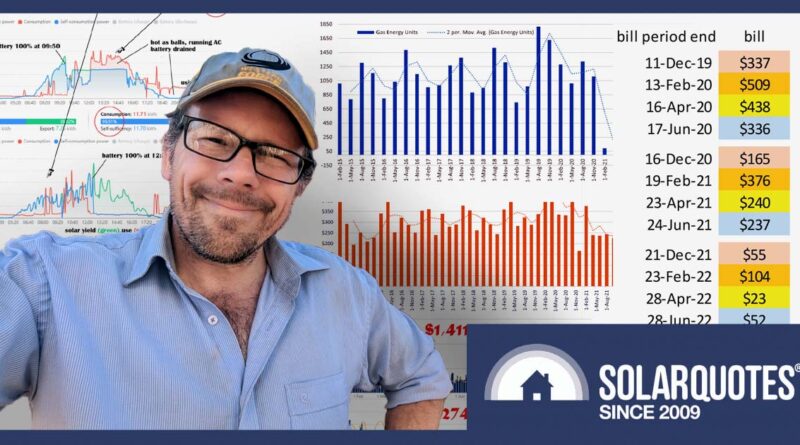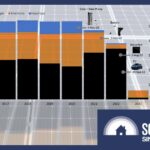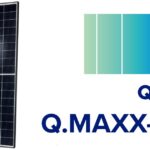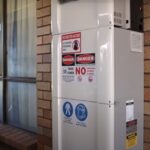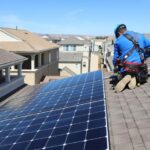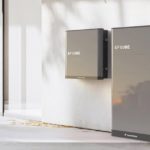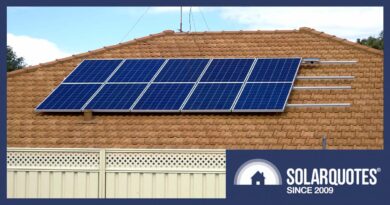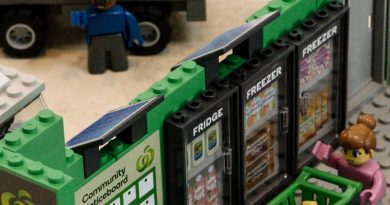Home Solar + Battery + Electrification Payback Under 10 Years? No Worries!
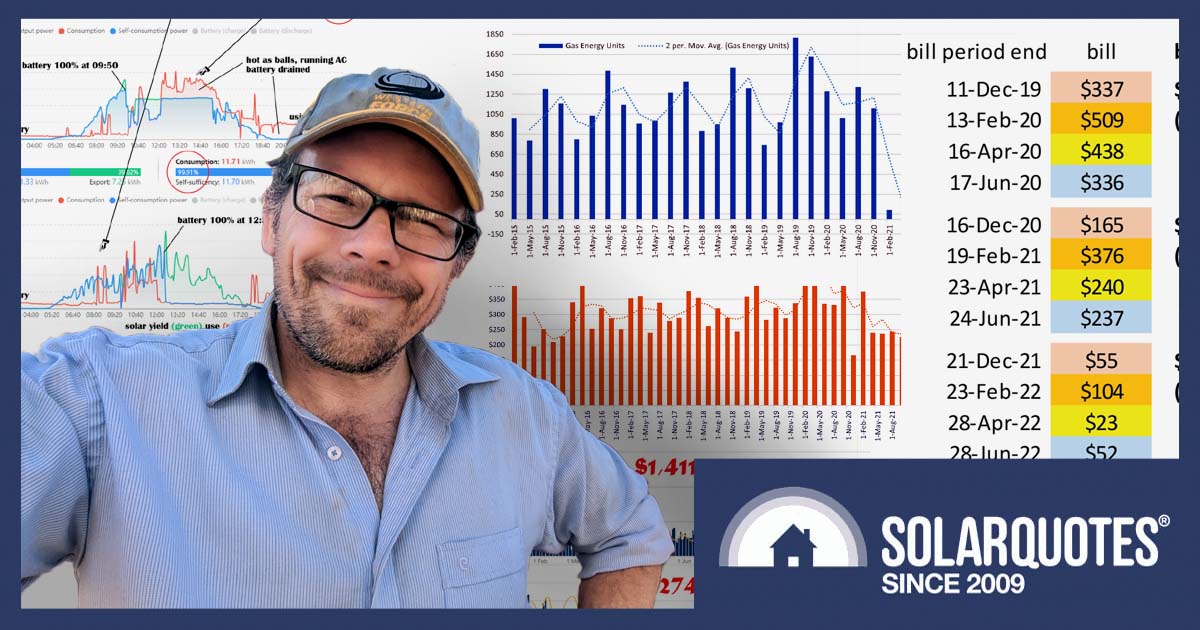
Investing in a residential home battery and solar system is generally considered feasible only if the payback falls within the battery warranty period – typically 10 years. According to this bloke, that’s easily doable.
Josh Mylne is, among other things, a dad, a scientist, and an energy nerd. He has an unhealthy addiction to Excel spreadsheets, only perhaps surpassed by SQ’s Ronald Brakels.
He’s extracted an obscene amount of data from his various apps and home energy bills and reckons his solar power, battery, heat-pump and induction cooking set-up is on its way to paying for itself in less than 10 years. Way less.
Josh lives in my home state of WA, so I thought I’d go around and have a chat – or as his wife calls it, “nerd out together”.
Unhealthy Addiction
The Excel addiction and energy nerdism started around 2005 when Josh and his family moved from the UK back to Australia. They were skint, so due to budgetary constraints, out came the Excel spreadsheet to guide their finances.
They continued being a one-car family and used bicycles as much as practical. Fast forward to the COVID-19 pandemic and the decarbonisation journey began in earnest.
On Go The Solar Panels
In November 2020, they had rooftop solar power installed. The system consisted of 19 x Q.MAXX-G2 Qcells 350W solar panels (6.65kW total), and a Huawei SUN2000 single phase 5kw hybrid inverter.
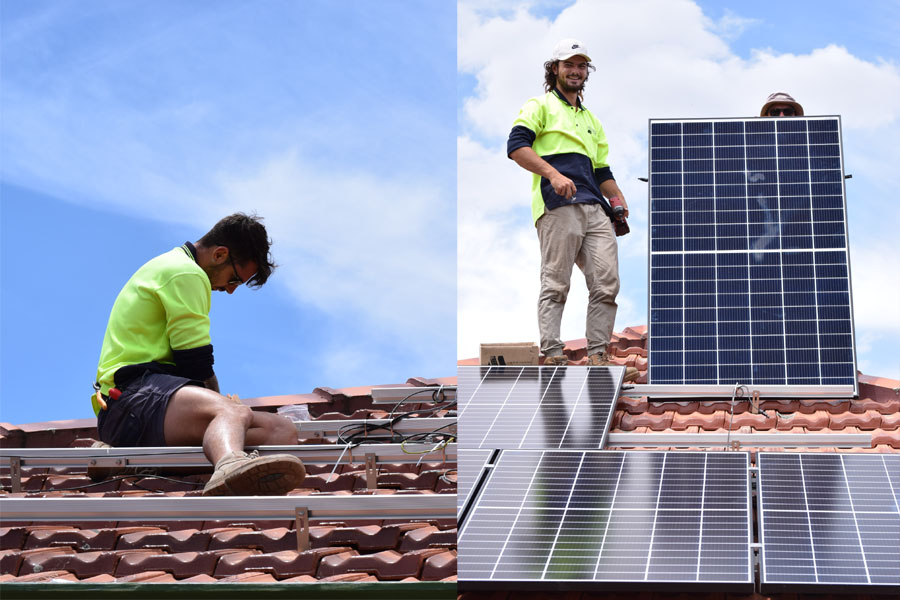
Installing Josh’s initial Q.MAXX-G2 Qcells 350W solar panels. Image: Josh Mylne
Josh says: “I knew nothing about solar at the time. This video on YouTube from the Solar 101 webpage is 25 minutes and it explains everything. After watching it, I used the SolarQuotes website to arrange three quotes and the guide at Solar 101 to work out what was quality gear.”1
After the solar panels were installed, the electricity bills dropped by about $950 p.a. But that wasn’t enough for Josh. He’s not a big fan of supply charges or the miserly feed-in tariff offered by Synergy in WA. He became a net exporter of electricity, but that didn’t reflect in power bills due to the difference in import tariff (30c per kWh) and feed-in tariff (2.5c to 10c per kWh), and the aforementioned supply charge ($1.07/day). Grrr. More work to do.
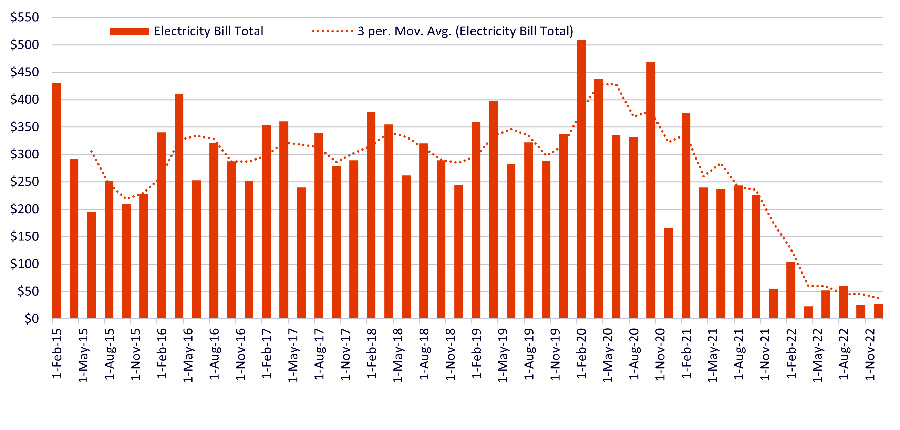
Josh’s electricity bills from February 2015 to November 2022. See the big dip in November 2020 when the solar panels went on, then again in November 2021 with the battery + additional solar. Image: Josh Mylne
See Josh’s electricity usage graph below compared to the bills above. He became a net exporter in November 2020 but it didn’t reflect in his electricity bills. Not happy Jan.
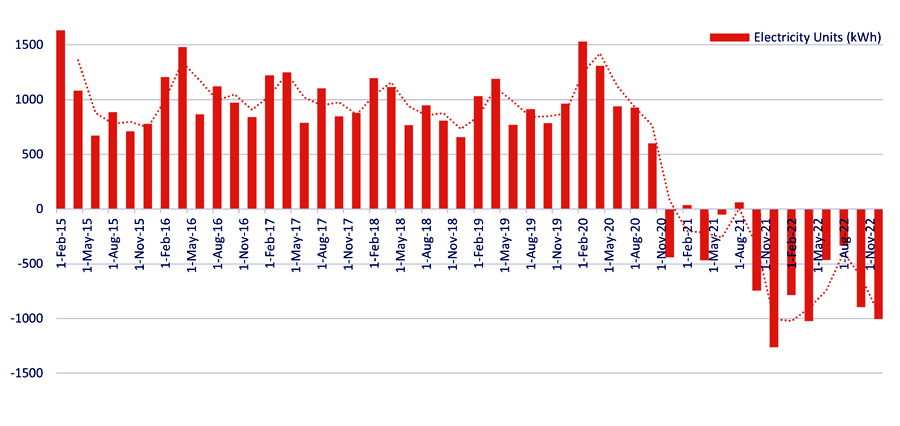
Josh’s electricity usage from February 2015 to November 2022, showing his net exports after the solar power system installation. Image: Josh Mylne
Getting Off The Gas
The goal was to decarbonise their lives as much as possible, so getting off the gas was a priority. At the same time as the solar panels went on, the gas hot water system was replaced with an iStore 270L heat pump.
Gas usage immediately plummeted by 95%. The bill, however, dropped by only about 80% – still an impressive saving of $750 p.a. This was once again because of the despised supply charge. A kitchen renovation in July 2022 provided an excuse to ditch gas altogether when they installed an induction cooktop, providing further savings.
Having no gas bill now saves them $900 p.a. The only gas at their place now comes out of a bottle when they fire up the BBQ.
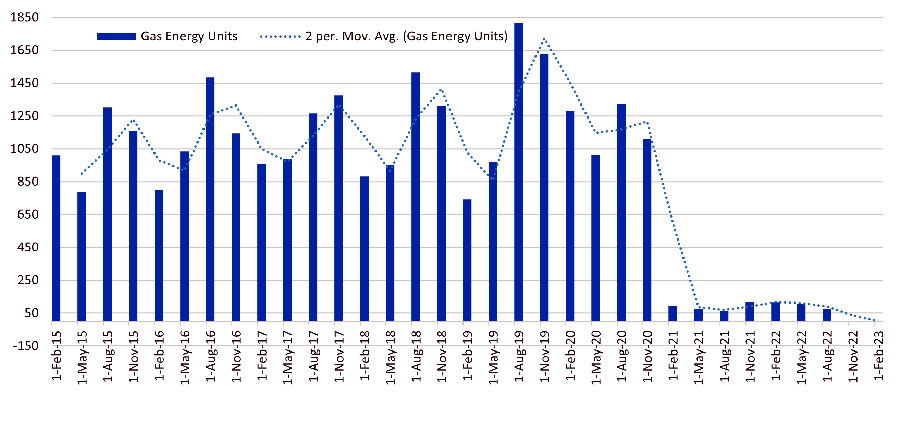
Josh’s gas usage chart below shows a huge drop in November 2020 with the new heat pump, which disappears in August 2022 when the gas was cut-off. Image: Josh Mylne
What’s The Heat Pump All About?
I’ll let Josh tell you:
“The heat pump is brilliant. It works like an inside-out fridge; the cool air being dissipated and the heat being released into coils heating the water. It has various modes, but we have ours set to come on at 11 am and not to cycle after 5 pm, which means it’s usually using solar energy to heat the water.”
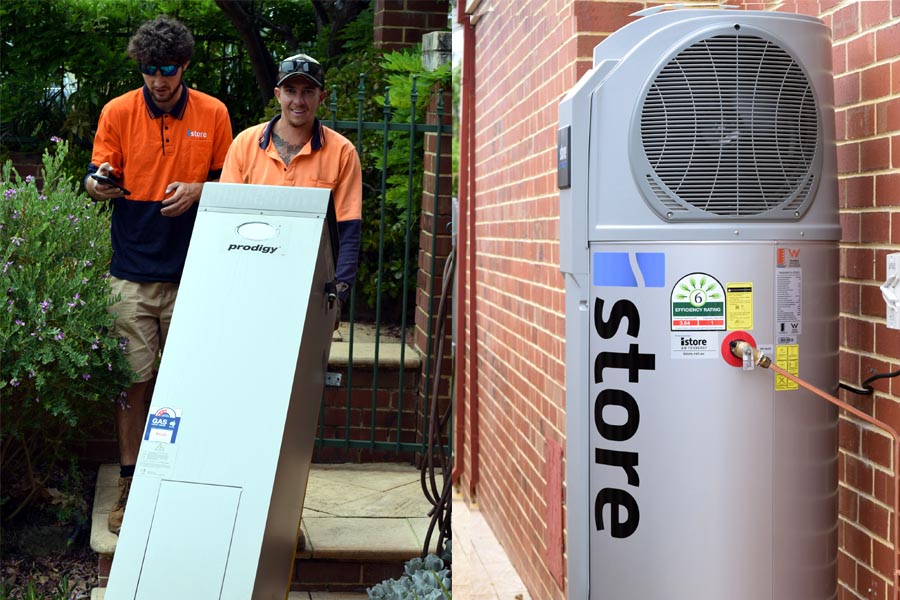
Out with the old gas boiler and in with the new iStore 270L heat pump. Image: Josh Mylne
“We’ve not run out of hot water yet, despite having three teenage boys. By using solar energy and then storing the energy in the water as heat, in ways it’s acting like a battery. It only draws about 1.2 to 1.6kW while it’s running. It runs usually for about 90 minutes each day and works better the warmer the air around it is.”
Home Battery + More Solar Power
Not content with the savings already achieved, the family decided (or maybe Josh decided) to purchase a home battery in November 2021. At the same time the Huawei Luna 10 kWh battery2 was installed, they threw another 7 x 350W solar panels on the roof, bringing it to a total of 9.1kW of solar capacity.
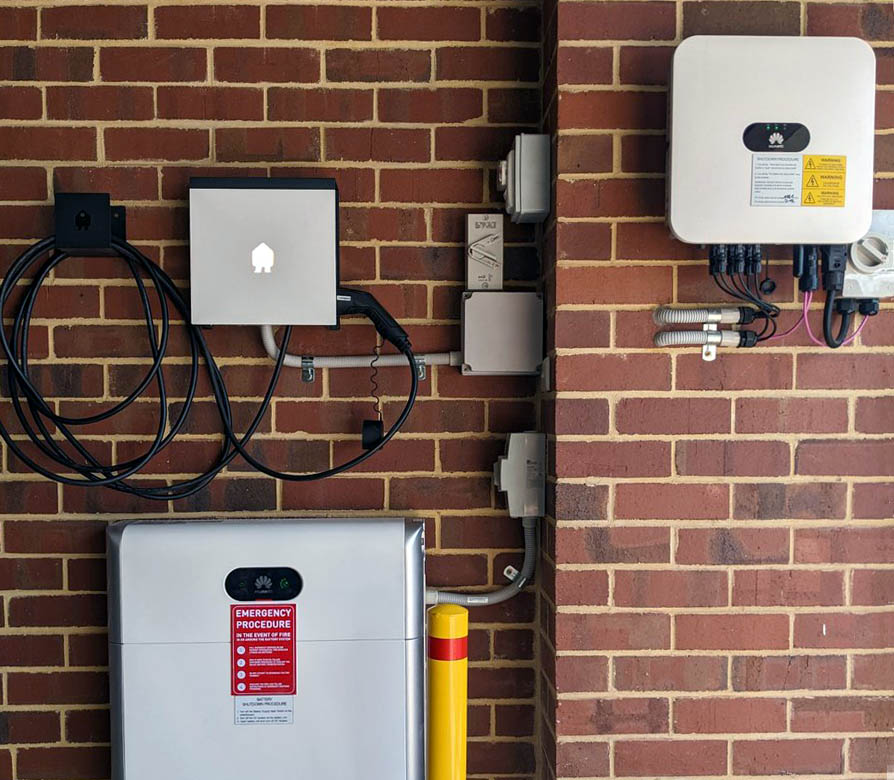
Happy family: Huawei SUN2000 single phase 5kw hybrid inverter, Huawei Luna 10 kWh battery, and Smappee EV Wall Charger. Image: Josh Mylne
Josh must have been bouncing off the walls in excitement at the thought of expanding his Excel spreadsheet to include the battery. He’s now worked out they’ve become 93% self-sufficient for energy. To put it another way, only 7% of the electricity they use comes from the grid, averaged over the whole year.
He says that the battery gets them all the way through the night 310 days per year (84.9%), although it’s almost impossible to have a day that’s 100% self-sufficient as any spike of use that goes above 5kW has to be covered by the grid.
“After one full year with the battery, I analyzed how often the battery gets you all through the night to the next day (see the graph below). Out of the whole year, 341 days (93.4%) made it past 9 pm, 334 days (91.5%) made it past midnight, 320 days (87.7%) it got past 4 am, and 310 days (84.9%) it made at all the way through all night to the next day with no grid draw at all.”
I must admit at first glance I struggled to ‘get’ the graph below, which shows the ability of Josh’s battery to see them through the night without grid power, over a period of 12 months. The green is not actually a Christmas tree, but the data. The white bars (which look like the data) are, in fact, showing where the battery didn’t make the distance, and the grid kicks in. If you stare at it long enough it’ll make sense.
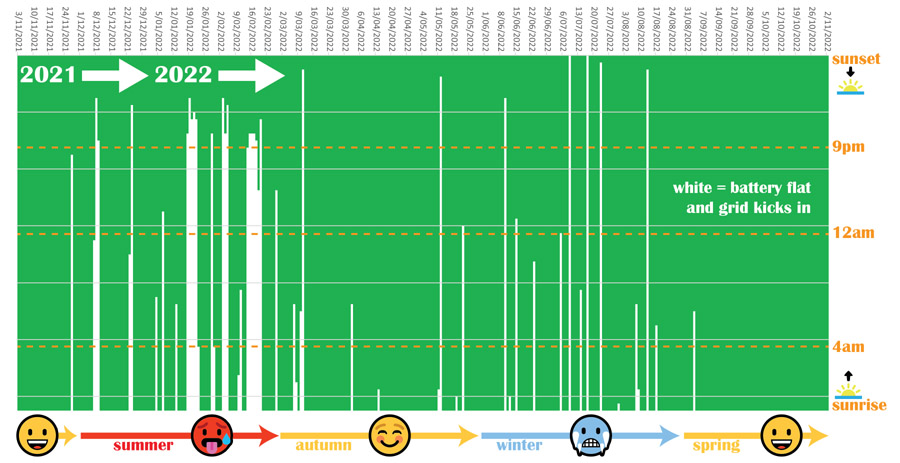
Josh’s ‘Battery Through The Night’ graph. Image: Josh Mylne
You can see the heatwaves in late summer where a few days in a row the battery was drained by 9 pm thanks to the air conditioner. Winter had the occasional super overcast/ rainy day when the battery didn’t fully charge, as you almost always see single white bars.
Hot tip for WA solar buyers:
Josh’s solar, battery and inverter are DC-coupled, giving him potentially more power to charge the battery than an AC coupled system would. As the battery is connected to the DC side of the hybrid inverter, its input is not limited by the 5 kW nominal inverter rating, and so can take advantage of all the unclipped power available from the solar array to charge the battery.
This works particularly well in systems where the DNSP rules limit single-phase inverter sizes to 5 kW (WA), and a bonus in battery systems where panel capacity is more than 133% of the inverter rating. Josh’s system ticks all the above boxes – Western Power inverter limit: 5 kW (single phase), Josh’s solar: 9.1 kW, Josh’s inverter: 5 kW. This could arguably be a significant factor in trimming down the payback time for a home battery.
Out With The Diesel And In With The EV
In September 2022, the family became proud owners of a brand new BYD Atto 3 electric vehicle. I’m jealous as hell. This EV has (sort of) replaced their aging 2011 diesel Holden Captiva which had clocked over 230,000km. They’re hanging on to the Captiva for now, as the two oldest sons are now driving age.
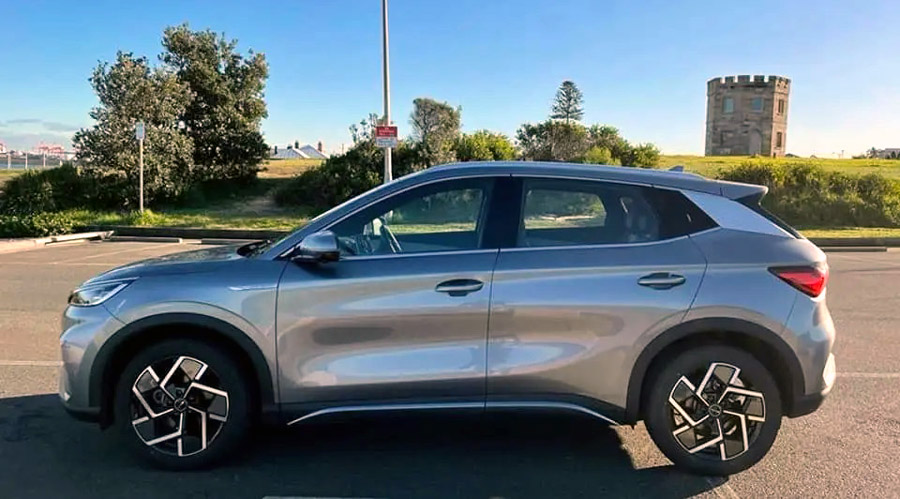
BYD Atto 3 electric vehicle. Image: The Driven
Prior to the kids growing up, the fuel bill was $3,000 p.a. Yes, there’s a spreadsheet for that too (graph below). Fuel costs then spiked to $4,500 p.a. with the new drivers, and then since the EV purchase has dropped down to $30/ quarter so far.
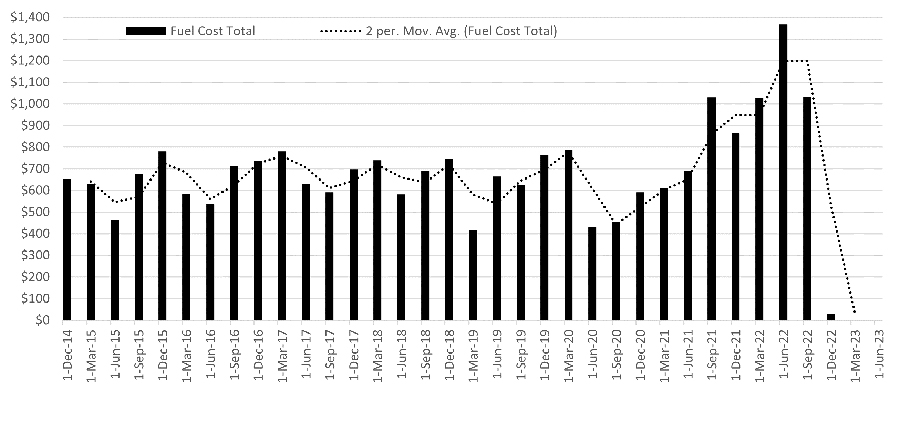
Josh’s fuel costs since December 2014. We’ll see how that pans out since the arrival of his fancy new EV in September 2022. Looking good so far. Image: Josh Mylne
Josh says the Atto 3 is a nice car to drive, with a range of 480km on a full tank charge.
“The EV gets driven about 250 km a week. I commute by bike, but my wife leaves for work before the solar kicks in and gets home after sunset, so we charge the EV on weekends. Sometimes during the week, if I’m working from home, I’ll drop my wife at work and leave the EV at home charging. We have a Smappee EV Wall Charger that has a smart mode that uses only surplus solar to charge the car.”
The Bottom Line
So pretty pictures and graphs aside, after extracting data from Josh’s spreadsheets, he reckons the combined solar power plus battery investment will pay back in 6.4 years. This is a conservative estimate because the cost of the heat pump and induction cooktop could arguably be left out of the equation as the gas appliances were at the end of their life. That would bring the payback down to 4.9 years.
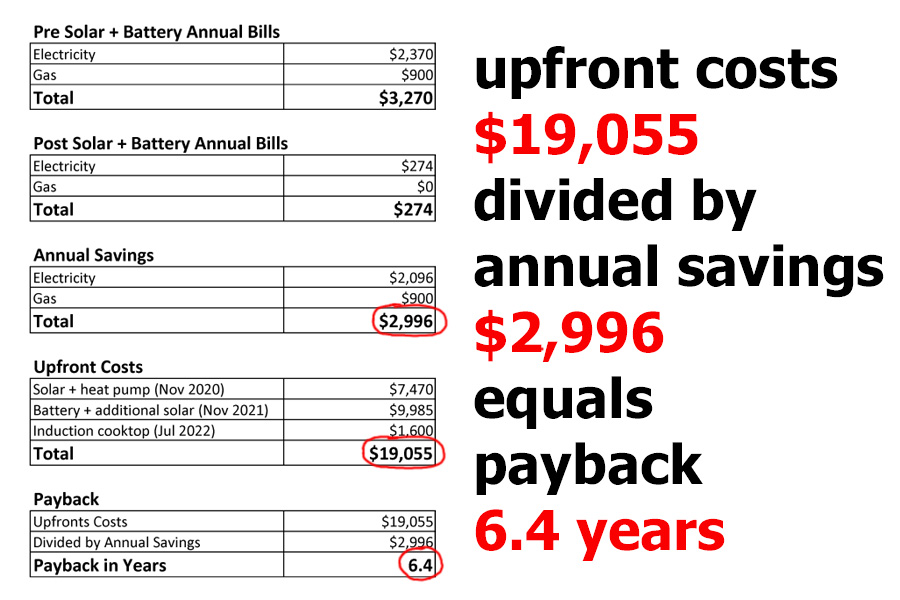
The bottom line – Josh’s combined solar + battery payback estimate. Image: SolarQuotes
The EV is not included because he only has about three months of data. I’m sure that in about nine months we’ll see a new Excel spreadsheet with a full-blown fuel savings analysis, including the full cost of ownership and depreciation comparison between his EV and the old Holden Captiva.
There’s one more thing Josh would like to say about that.
“The whole payback equation changes if you can power your car with surplus solar, which we do. A tank of diesel costs $110 and gets us 400 km. With the EV, a 60 kWh full charge gets us 480 km, and costs literally 2 or 3 dollars. That’s all I get if I feed 60 kWh into the grid.”
Like many solar power system owners and people in the industry, Josh didn’t start his decarbonisation mission to save money. That’s just an added bonus.
“I went solar not just to save money, but to make less carbon dioxide myself as well as, in a tiny way, help hasten the decline of wasteful, polluting, and increasingly expensive fossil fuels.”
Thanks for doing some of the heavy lifting, Josh. I’m 100% with you on that. You can follow the rest of Josh’s journey as it evolves on his own blog right here.
Original Source: https://www.solarquotes.com.au/blog/solar-battery-electrification-payback/

